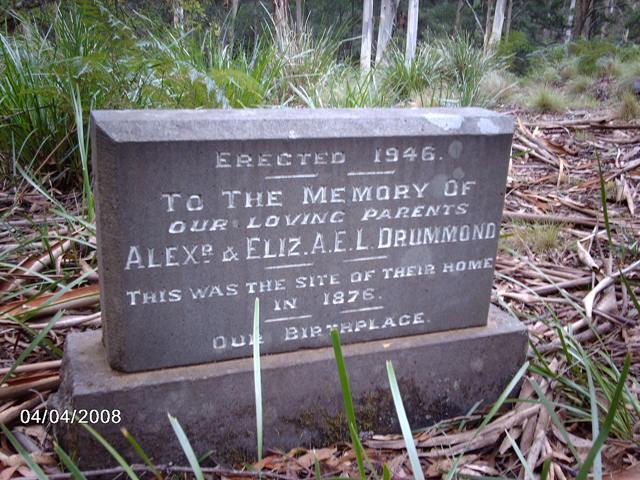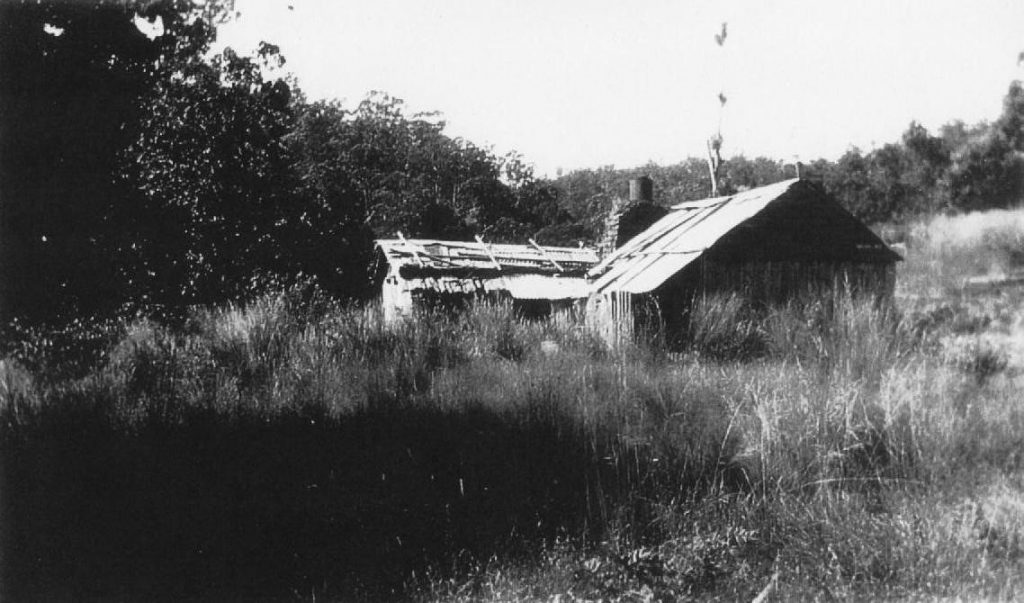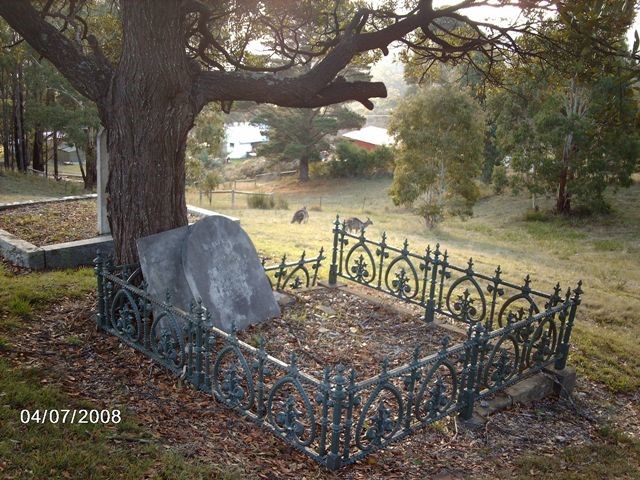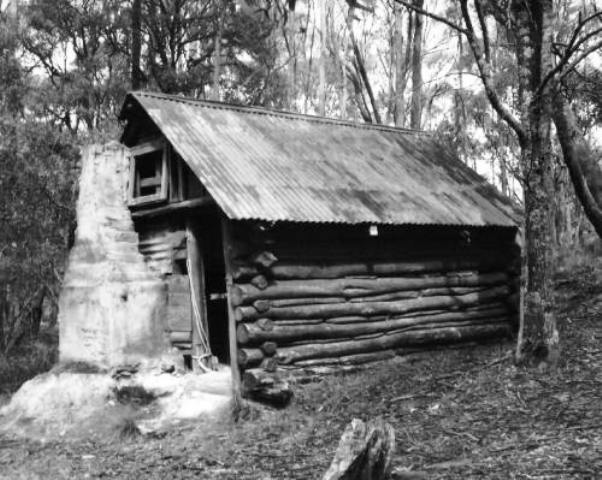The History of the Blackwood Avenue of Honour and the Honour Boards.
Compiled by Margot Hitchcock, Historian for the Blackwood & District Historical Society. November, 2018.
In 1919, the Avenue of Honour from the main road to the Mineral Springs area was graded and formed and 80 pine trees were planted, which were provided by Bill and Ken Matheson and Tom Vigor. The lower parking area was then levelled through a working bee. The Avenue of Honour was erected to honour all the men from the Blackwood area who enlisted in the 1914-1919 1st World War. Some were lucky enough to return to resume their lives in Blackwood. Others made the supreme sacrifice by losing their lives in some far distant country from their beloved Blackwood.
The Avenue of Honour had a significant entrance marked with two solid column constructions with a timber sign above attached to the top of the columns with the words “Avenue of Honour”. Inside this entrance on either side were two monuments with a small cannon mounted on each monument. Leading down to the mineral springs were the Pine trees planted to honour the men who died for their country, each tree had a name tag to honour one of those men who died.
The Honour Roll Boards – Have you ever looked at the two boards hanging in the Blackwood Hall and wondered about the men behind the names..??? The 2nd board hanging in the Blackwood Hall is the Barrys Reef board.
The 48 names of these men who enlisted for active service on the 1914-1919 “Roll of Honour” board, mounted in the Blackwood Hall which states “Past Scholars of the Mount Blackwood State School No. 1074, who enlisted for Active Service Abroad – in a small list in the middle is written -In Memoriam – Greater love hath no man than this, that a man lay down his life for his friends” this is for the eleven men who died during active service whose names are in the first list.
Men whose names appeared on the Blackwood Honour Board –
Armstrong A.M.*, Armstrong T.M., Armstrong W.E., Byrne J., Broad W.J., Byres W., Carruthers G.R.*,
Carruthers H., Cherry H., Cocciardi A., Davey R., Davey L., Downing A., Downing G.T., Downing R.,
Hall R.W.M., Lawrence W.*, Morrish H.C., Marshall A.S., Murphy T.*, McCracken J.N.*, Nelson S.,
Nelson H., Perry G., Gribble.V.V., Derrick.E.H., Pattinson A.O., Pattinson J.H., Pattinson W.B., Pearce R.L.,
Pearce L., Pincombe J.R., Rae F., Speary N.J.W.,Skinner W.F.*, Saunders G.*, Shebler G, Smith M.H.,
Smith T., Smith E., Seymour E., Seymour J.*, Suffern G.E., Sweet H., Stephens I.*, Stephens C.R., Vigor A.J.,
Whatmough R.H.*, Whatmough W.J., Webster T., Whitford.L., Langford. B.D.*.. * = died on active Service.
Men whose names appeared on the Barrys Reef Honour Board –
- Allen, J. Knight, G. Allen, F. Parke, J. Allen, E. Peart, H. Anderson, F. Rae, W. Broad,, G. Rickards, H. Carruthers, L. Sullivan, J. Cole, L. Walters, R. Drummond, H. Wells, J. Higgins, J. Williams, M. Keilan, C. Williams. DIED ON SERVICE – R. Kidd, T. Murphy, N. Kidd, R. Power, N. McCracken, F. Rattray, V. Moore, J. White, H. Vroland.
Some names can be found on the Internet at the ‘Australian War Memorial Roll of Honour’ of men who are recorded on the Barrys Reef Honour Roll and died on duty during the war, one was –Frederick Norman Rattray – Roll of Honour Service Number – 1508 : Next of Kin – (Father) RATTRAY James. Service: Australian Army, – 1914 – 1920 – 10th Batt infantry. Age 32, joined 9.12.14. Killed in action 19/6/17 – in field, buried Villiers Brentonneux memorial France. Son of James & Margaret Rattray died age 34 yrs. James Rattray was Head Teacher at Barrys Reef School from 1886 – 1887.
James Emil Huntly Vroland – Roll of Honour Service number: 855, Rank: Corporal, Unit: 23rd Battalion (Infantry),
Service: Australian Army, Conflict: 1914-1918, Date of death: 29 November 1915. Cause of death: Killed in action, Cemetery or memorial details: Lone Pine Cemetery, Gallipoli, Turkey. War Grave Register notes: VROLAND, Cpl. James Emil Huntly, 855. 23rd Bn. Australian Inf. Killed in action 29th Nov., 1915. Age 24. Son of Janet Huntly Vroland, of Carlton North, Victoria, Australia, and the late Carl H. F. Vroland. Native of Barry’s Reef, Victoria, Source: AWM145 Roll of Honour cards, 1914-1918 War, Army.
Carl H. F. Vroland was Head Teacher at Barrys Reef School from 1891 – 1899.
James Emil Huntly Vroland was born in Blackwood in 1891. His mother was Janet Scott and his father was Carl Hakam Ferdinand Vroland. (Digger records).
Neil Kidd – Roll of Honour – Service number: 1740, Rank: Private, Unit: 23rd Battalion (Infantry), Service: Australian Army, Conflict: 1914-1918, Date of death: 7 September 1915. Cause of death: Died of wounds, Cemetery or memorial details: Lone Pine Memorial, Gallipoli, Turkey. War Grave Register notes: KIDD, Pte. Neil, 1740. 23rd Bn. Died of wounds at sea 7th Sept., 1915. Place of Enlistment – Melbourne VIC : Next of Kin – (Father) KIDD Arthur of Yea. Died at sea 7/9/15 – shrapnel wounds to jaw and throat – wounds received in action at Gallipoli died on board the S.S ‘Maheno’. Buried at sea off Lemmos. Chaplain D.Dutton. Mabel Johnston was the mother of May Johnston, the child of Neil Kidd (ex-nuptial) born 29/6/1911 at Yea. Source: AWM145 Roll of Honour cards, 1914-1918 War, Army.
Neil Kidd was born at Blackwood in 1891 to Arthur Kidd and Euphemia McSwan, making him 24 yrs old when he died in 1915. Neil had a brother Alexander Kidd born in Blackwood in 1889, and Arthur born in Barrys Reef in 1883, Jane born 1884, and Euphemia born 1886. (Digger records)
Robert Kidd – brother of Neil Kidd – Age 20 yrs & 9 months – Sergeant – Blackwood Sawmiler. Fourth Light Horse regiment. 2nd Anzac mounted regt. Later 2nd Lieutenant, 58th battalion. Joined 20-8-14. Killed in action in the field – 25/10/17. ‘Lieut R.Kidd was killed in action whilst moving up the trenches at Passchendaele Ridge east of Ypres. He was badly hit by a shell. Location of grave is not known, it may be the Military Cemetery near Anzac Ridge, Passchendaele.’
Researched by Margot Hitchcock from her forthcoming book ‘The History and Pioneers of Blackwood’, hopefully to be published soon. Other books published by Margot Hitchcock – “Aspects of Early Blackwood”, Some History of Simmons Reef, Blackwood”and “The Billy Pincombe Tragedy”. See – www.blackwoodpublishing.com
For help with information on Blackwood ancestors contact Margot Hitchcock – email – margothitchcock@bigpond.com



















